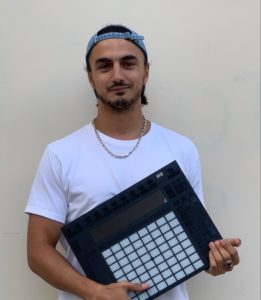Recently, music production has turned essentially digital, hence, drastically increasing the scope of possibilities in terms of sounds synthesis and textures. Thus, the sound design process has become increasingly free and complex given the overwhelming amount of parameters provided by modern synthesizers. Therefore, methods allowing an easy and rich fine-tuning of sounds become a key requirement in music production, especially for non-expert users. Moreover, at a time where home-studios are becoming a norm in music production, it is essential to develop simple and lightweight tools that target users that create music on a single computer. Passionate about urban music since I was a child, I have always looked for music that would make me nod my head. Today, I have identified that rhythm and percussive sounds are particularly important to me. That is why I am focusing on drums and developing AI-based solutions for helping artists to easily design original drum sounds and rhythms, with the final goal of enlarging the horizon of possibilities, always trying to avoid framing artists creativity.


